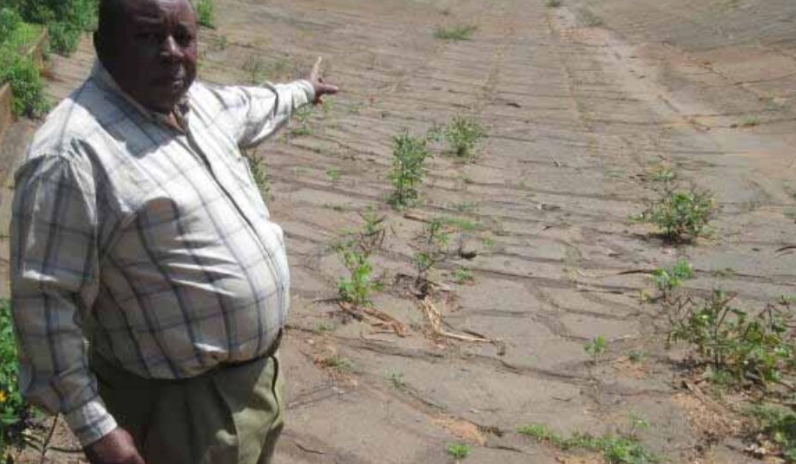As part of attempts to collect rainwater in the area, residents of the villages of Kighombo, Mkwachunyi, and Ikanga in Voi Sub County are asking with the county government to expedite the renovation of the crumbling Kighombo dam.
The East Africa Railways Corporation constructed the dam, which is now 111 years old, in 1912 to supply water for locomotive steam engines.
Before it began to dry up in 1963, the dam supplied water to tens of thousands of people and animals.
The dam suffered from years of neglect and developed flaws that prevented it from holding water.
The repair of the dam, according to the locals, will increase water collecting, particularly during the predicted brief showers for usage during drought season.
Mr. Nathan Mwawaka, a farmer from Kunde village, says adverse effects of climate change are being felt in the rural villages with the majority of farmers losing their livestock and crops to drought.
He says harvesting of water at the dam could alleviate the effects of drought when rains fail.
“Last year our cattle died. We have encountered losses in our farms due to lack of rain. Most of us depend on farming to earn a living and to take our children to school but it becomes difficult to do so after the effects of climate change," he said
Kighombo Dam has a depth of thirty-three feet and has the capacity to hold 30 million gallons of water.
The National Water Corporation which later took the dam in 1992 from East Africa Railway Corporation was unable to effectively maintain the facility leading to rapid deterioration of the walls and water pumping system.
When it was in use, the dam served over seven villages with water being piped to as far as Bachuma and Mackinnon Road areas at the boundary of Kwale and Taita-Taveta County.
The rehabilitation, the residents say, will boost efforts by the government to harvest water in the region. The degradation of Mbololo and Mwambirwa forest has also contributed to the death of the iconic dam as the streams that feed the dam dried up.
Lately, the region as is the case with many other parts of the country has been experiencing drought due to climate change.
From widespread crop failure to death of livestock, the situation had made the food security situation in the region more precarious with thousands now having to depend on the government for food aid.
On her part, Ms. Linet Mnjala, a resident of Mwakiki village, says after the collapse of the dam, local residents are forced to walk long distances to fetch water from the remaining sources.
However, vandalism of fences, pipes and taps have further contributed to the death of the dam.
“The dam was fenced to keep the water safe. There was even a guard during the day and night. People came from as far as Mkwachunyi to fetch water. It was a very vital resource for us,” says Ms. Mnjala.
Mr. Zaccheus Maghanga, an official with Water Resource User Association, says the county should conduct a feasibility study on the ability of the ancient dam to store storm drain waters which can then be pumped into deserving villages through solar powered pumps.
Maghanga added that the facility can store additional water from Mzima springs to serve the parched villages in Mbololo location in Voi.
“A feasibility study can determine the ability of the dam to hold water and act as a reservoir when it rains,” he said.
According to the 2022/23 county budget, the Water, Environment and Sanitation docket has a development budget of Kes69 million. This was after the County Assembly slashed the original budget by over Kes 129 million.
However, the docket has huge donor-funded programs including Kes 800 million Water and Sanitation Program funded by World Bank, Kes 15 million Mwaroko-Sinai bulk water program funded by Kenya Red Cross Society and Kes25 million Kishenyi-Kishushe Water Project which is funded by Water Sector Trust Fund.









